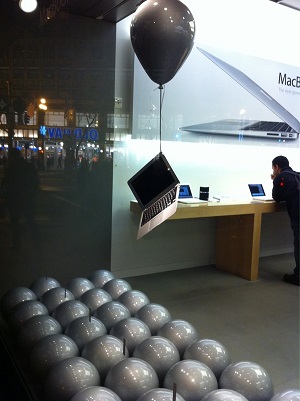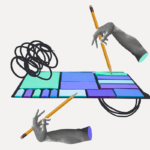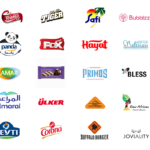As a marketer who loves writing, Cairo’s crowded streets represent a unique blend of questions and inspiration for me. From the gift shop that still has a Valentine window display to the clothes store with a religious saying instead of a name. Cairo’s streets are certainly an amusement to the writer in me and a series of mental projects to the business side of me.
Window displays are a crucial marketing medium, which needless to say most if not all marketers are aware of the basic art required to create it; however, add a bit of psychology to the mix and you have got a few tricks that will not only ensure an attention grabbing exterior to your store but a lasting relationship with your soon to be customers.

Go Blue:
While many window displays are themed red, black or other bold colors to grab attention; color psychology has proved that light blue promotes a sense of trust. Incorporating light blue in your window display will increase trust in your brand and quality.
Dim the Lights:
Stores that offer furniture and home accessories would benefit greatly from a dimmer window display. Dim lights trick the brain into switching to relaxation mode as well as encourage creativity as per a recent study in the Journal of Environmental Psychology. This will benefit the brand on two different levels; first a shopper in a creative mood will view the merchandise with an open minded approach, seeing more than one purpose for a simple lamp and thus increasing the odds of making a purchase; secondly and more importantly, customers will want to take the good feelings triggered in their brain (relaxation) home with them, associating relaxation with your furniture and Brand will guarantee a lasting impression.
- Advertisement -
Less is More:
Crowded window displays, filled with merchandise stacked from top to bottom is a common eyesore polluting Egypt’s streets, not only does this image scream bad taste, but overcrowding is commonly associated with poor quality merchandise; therefore consumers are subconsciously conditioned to associate excessive window displays with cheapness of quality.
Use Happy Lights:
Yellow and red lights trick the brain into feeling cheerful and as a result the brain will be encouraged to subconsciously associate cheerful feelings with your brand and merchandise.
A study published in the Journal of Neuroscience, found after examining the effect of white, blue and red lights on subjects over the duration of four weeks, that subjects exposed daily to red light and other warm lights showed significantly fewer symptoms of depression.
Whether you are a service provider, a small boutique or a huge retail chain, your exterior is the first thing current and potential customers see, it is your billboard advert in the street, it is your identity and most importantly it is an eye into the world of possibilities your brand presents to consumers.








